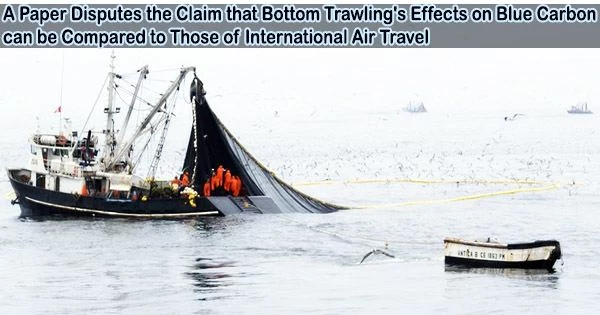The conclusions of research by Sala et al. on the quantity of CO2 produced from the seabed by bottom trawling are challenged in a “Matter Arising” paper published in Nature Today. When the report was published in 2021, it garnered great attention across the globe since it compared the amount of carbon released by bottom trawling to that produced by the world’s airlines.
Prof. Jan Hiddink of Bangor University’s School of Ocean Science and colleagues explain why the approach used in the original publication was far too basic and greatly overestimates carbon emissions in their paper calculating the carbon benefits of discontinuing bottom trawling.
The amount of carbon that would be disturbed was modeled in the research in order to determine the amount of CO2 released by bottom trawling, and it was expected that the majority of this carbon would be transformed into CO2. However, whether or not bottom trawling disturbs the majority of this organic carbon on the seafloor, it will still decay and produce CO2.
Hiddink et al., therefore, show that only a very small fraction of seabed carbon reacts to trawling disturbance.
“The carbon benefits of ending bottom trawling have been massively overstated in this paper” Hiddink explains. “While bottom trawling undoubtably disrupts the natural carbon fluxes and disturbs the bottom-dwelling sea life, seabed carbon flows are highly complex and need further research.”
Hiddink investigated 49 additional studies on the measured CO2 differences before and after trawling in order to determine whether the estimates in the research were feasible. The results were mixed, with 60% of the papers finding no significant effect, 29% finding lesser organic carbon, and 10% finding more.
The carbon benefits of ending bottom trawling have been massively overstated in this paper. While bottom trawling undoubtably disrupts the natural carbon fluxes and disturbs the bottom-dwelling sea life, seabed carbon flows are highly complex and need further research.
Professor Jan Hiddink
If the findings of Sala et al were correct, surely these massive and significant numbers would be reflected in these studies?
Hiddink argues that the Sala paper confused the far less reactive carbon buried in the deeper sediment with the fresh carbon in the top layer, which would be swiftly released by natural processes in any event. As the surface layer carbon will be converted to CO2 in any case, assuming it is affected by trawling makes no sense, and massively inflates the estimated CO2 emissions.
HHiddink suggests a figure that is a factor 100 to 1000 times lower than calculated in the Sala paper for the amount of carbon released by trawling would be more appropriate.
“We don’t know enough about what bottom trawling does to seabed carbon storesto be able to make robust global estimates about the effects of bottom trawling.”
“Using these figures is worrying, as many governments and others are proposing banning bottom trawling and using the ‘carbon credits’ to offset other activities, but if the carbon emissions are overestimated by several orders of magnitude, we risk increasing overall CO2 emissions while reducing the global food supply.”





